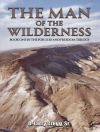In ‘The Phantom of Bogue Holauba, ‘ Mary Noailles Murfree intricately weaves together elements of Southern Gothic and regional realism, rendering an evocative narrative centered around the eerie landscapes of Tennessee. The novel unfolds in a secluded mountain village where folklore intertwines with the psychological depths of its characters, highlighting themes of memory, loss, and spectral hauntings. Murfree’s vivid descriptions and atmospheric prose transport readers to the hauntingly beautiful setting of Bogue Holauba, making it not only a tale of the supernatural but also a poignant exploration of human emotion and the complexities of identity within a rapidly changing Southern landscape. Mary Noailles Murfree, known for her deep-rooted connections to the Appalachian region, drew from her own experiences as a native of Tennessee to craft this story. Her intimate knowledge of the local culture and folklore fuels the authenticity and richness of her characters’ lives, reflecting broader societal changes at the turn of the 20th century. Murfree’s prowess in capturing the essence of her setting is complemented by her desire to elevate the narratives of marginalized voices in her community. The Phantom of Bogue Holauba is a must-read for enthusiasts of regional literature and those intrigued by the intersections of myth and reality. Murfree’s ability to create a haunting yet beautiful narrative invites readers to ponder the influence of the past on identity, making this novel a timeless exploration of the human condition.
เกี่ยวกับผู้แต่ง
Mary Noailles Murfree, an eminent figure in American literature, was born on January 24, 1850, in Murfreesboro, Tennessee, and lived until July 31, 1922. She carved a niche in the domain of regionalist writing under the pen name Charles Egbert Craddock. Murfree’s deep attachment to the mountains of Tennessee is evident in the vivid portrayal of Appalachian life and scenery that forms the backdrop to her narratives. Her writing is distinguished by its rich description, capturing both the raw beauty of the landscape and the complexities of the human condition within it. ‘The Phantom of Bogue Holauba’ is one of the many works that exemplify her unique literary style. Murfree’s stories were frequently published in notable periodicals, such as the Atlantic Monthly, prior to being compiled into novels. Her deft storytelling intertwines themes of nature, local dialect, and culture, often challenging popular stereotypes of mountain people by illustrating their dignity and independence. Despite writing during an era when female authors were not widely recognized, Murfree’s substantial contribution to the local color movement and American literature at large is uncontestable. Her works remain significant for their authentic depictions of early American life and the burgeoning diversity of literary voices in the post-Civil War United States.












